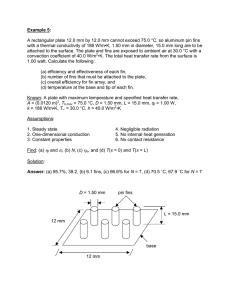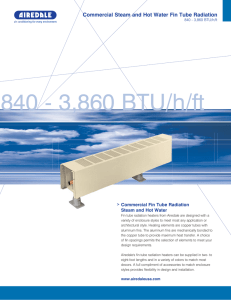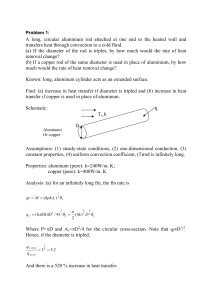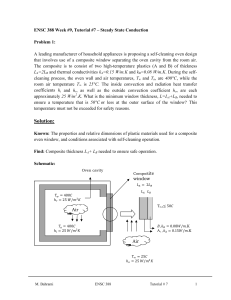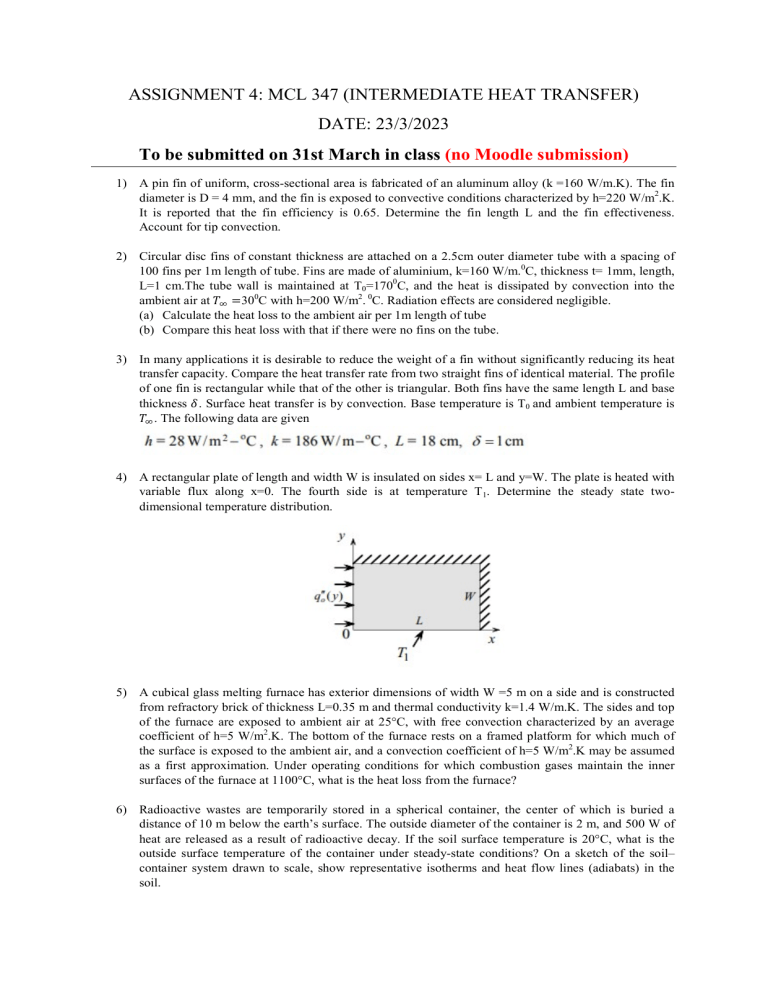
ASSIGNMENT 4: MCL 347 (INTERMEDIATE HEAT TRANSFER) DATE: 23/3/2023 To be submitted on 31st March in class (no Moodle submission) 1) A pin fin of uniform, cross-sectional area is fabricated of an aluminum alloy (k =160 W/m.K). The fin diameter is D = 4 mm, and the fin is exposed to convective conditions characterized by h=220 W/m2.K. It is reported that the fin efficiency is 0.65. Determine the fin length L and the fin effectiveness. Account for tip convection. 2) Circular disc fins of constant thickness are attached on a 2.5cm outer diameter tube with a spacing of 100 fins per 1m length of tube. Fins are made of aluminium, k=160 W/m.0C, thickness t= 1mm, length, L=1 cm.The tube wall is maintained at T0=1700C, and the heat is dissipated by convection into the ambient air at 𝑇 =300C with h=200 W/m2. 0C. Radiation effects are considered negligible. (a) Calculate the heat loss to the ambient air per 1m length of tube (b) Compare this heat loss with that if there were no fins on the tube. 3) In many applications it is desirable to reduce the weight of a fin without significantly reducing its heat transfer capacity. Compare the heat transfer rate from two straight fins of identical material. The profile of one fin is rectangular while that of the other is triangular. Both fins have the same length L and base thickness 𝛿. Surface heat transfer is by convection. Base temperature is T0 and ambient temperature is 𝑇 . The following data are given 4) A rectangular plate of length and width W is insulated on sides x= L and y=W. The plate is heated with variable flux along x=0. The fourth side is at temperature T1. Determine the steady state twodimensional temperature distribution. 5) A cubical glass melting furnace has exterior dimensions of width W =5 m on a side and is constructed from refractory brick of thickness L=0.35 m and thermal conductivity k=1.4 W/m.K. The sides and top of the furnace are exposed to ambient air at 25°C, with free convection characterized by an average coefficient of h=5 W/m2.K. The bottom of the furnace rests on a framed platform for which much of the surface is exposed to the ambient air, and a convection coefficient of h=5 W/m2.K may be assumed as a first approximation. Under operating conditions for which combustion gases maintain the inner surfaces of the furnace at 1100°C, what is the heat loss from the furnace? 6) Radioactive wastes are temporarily stored in a spherical container, the center of which is buried a distance of 10 m below the earth’s surface. The outside diameter of the container is 2 m, and 500 W of heat are released as a result of radioactive decay. If the soil surface temperature is 20°C, what is the outside surface temperature of the container under steady-state conditions? On a sketch of the soil– container system drawn to scale, show representative isotherms and heat flow lines (adiabats) in the soil.

